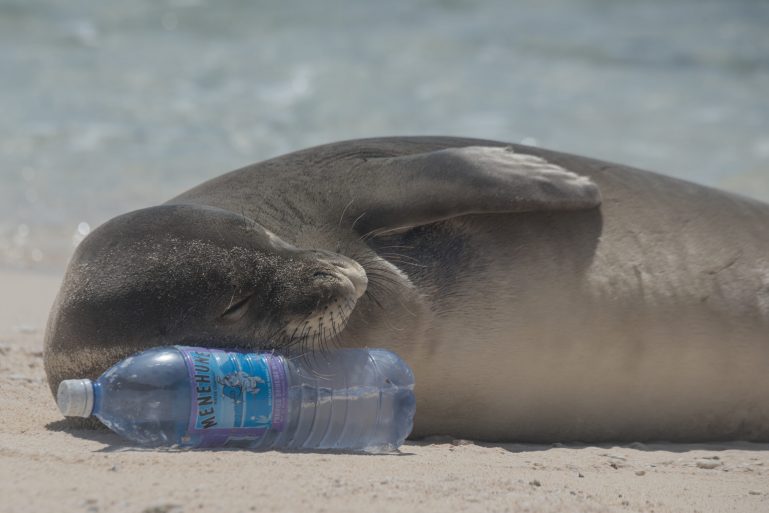The recent spate of pictures and videos showing visitors harassing animals has touched a nerve, to say the least.
It started a few weeks ago with a TikTok video of a Louisiana woman touching a sleeping monk seal on Kauai that quickly went viral. Afterwards, a slew of similar pictures and videos flooded local social media pages. From there it snowballed into coverage from every local media outlet, prompting Gov. David Ige to release a statement that people who mess with local wildlife will be “prosecuted to the fullest extent of the law.”
That is unlikely to happen to recent offenders. There are essentially three avenues of prosecution: in federal court, state court, or civil court through the National Oceanic and Atmospheric Administration.
Disturbing wildlife is a misdemeanor under federal law, but it’s a felony under state law, with a maximum penalty of five years in prison and a $10,000 fine. Even the most righteously outraged would probably agree that half a decade behind bars is a bit stringent for a thoughtless and idiotic moment that ultimately caused little actual harm.
Part of the issue here is the health and safety of the animals themselves. Human interaction is an ongoing threat to the roughly 1,400 remaining monk seals in existence. According to NOAA, as of 2018 at least 12 monk seals have been intentionally killed by people. But even in less extreme situations, people can unknowingly expose them to diseases and contaminants or disrupt their sleep patterns, either of which can have dire consequences.
Yet I get the sense that the outrage is about more than the animals themselves. As beloved as monk seals are, they do not have much direct or immediate impact on our daily lives…





